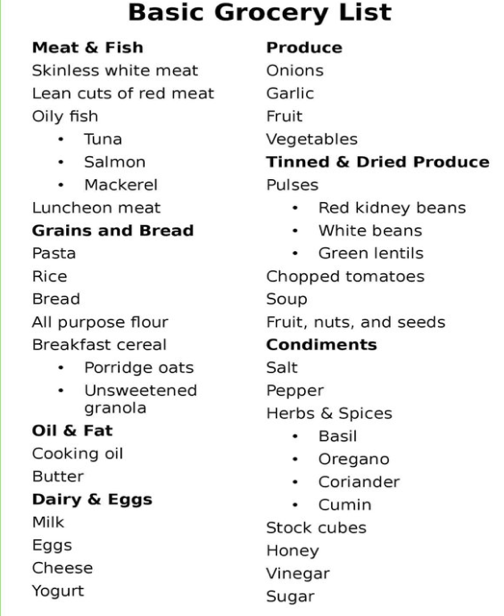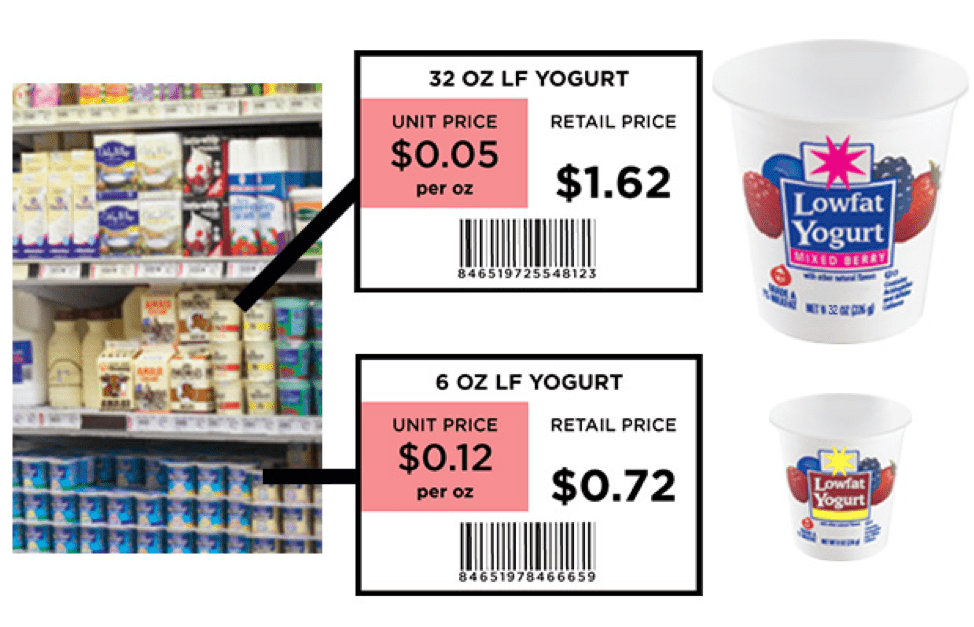Eating healthy can feel nearly impossible when your grocery budget is tight. Fast food and convenience food tend to be cheaper and more accessible, so sometimes it feels like you’re stuck with only “unhealthy” food options. However, with a little planning and preparation, it becomes more achievable to eat healthy on a budget! The key is being organized and prepared. If you want to avoid spending extra money eating out, it’s crucial that you meal plan. Commit to a day of grocery shopping and meal prepping. Pick simple quick recipes that align with your health goals.
Write out a weekly meal plan and grocery list
It’s super easy to write out a meal plan if you can commit to doing it on a certain day of the week. I prefer to do mine Saturday and shop/prep on Sunday. Research your recipes and stick to your grocery list.
Budget Friendly Meal Planning Tips
- Try a meatless protein! Protein sources like lentils, chickpeas, beans, eggs, quinoa & tofu can help you save on pricey meats.
- Make your meats go further. For example, I add spinach and shredded carrots to my ground meat for burgers, and peppers and onions to my shredded chicken.
- Use frozen fruits & veggies. These won’t go bad in your produce drawer and are just as healthy!
- Choose your recipes based around what’s in season. Go online to research what fruits and vegetables are in season, and choose recipes based around these foods!
- Seasonalfoodguide.org is a great resource.
- Buy meat when it’s on sale and freeze it – you usually have 3 or more months to eat it up, so if you have the storage buy in bulk!
- Use the same food in different ways. Save money AND simplify your grocery list by buying sale items in bulk, and then using the same item for different meals.
- For example, you can buy a larger pack of chicken breasts and use it to make enchiladas, taco salad, soup, or chili!

MyPlate Example
When meal planning, consider basing your meals on this model, in which non-starchy vegetables comprise half your plate. Vegetables, when purchased in-season and based on sale prices, are a very affordable way to fill up your plate. Meat protein tends to be the most expensive part of the plate, so consider using a meatless protein!
Planning Your Shopping List
- Look up weekly ads for your local grocery stores to see what’s on sale.
- Compare prices from different grocery stores for the same foods by checking online or on an app. Check out this blog for price saving apps.
- Certain items may be significantly cheaper at different stores, so sometimes visiting more than one store can save you more money overall.
- Price compare, go for generic or what’s on sale if the nutrition label is similar!
- Shop for spices and pantry staples in bulk. Always check to see what you have first.
- If your grocery store has an app, use it!
They generally have features that allow you to look up specific items to see
prices, as well as any coupons or sales for those items.
- They often have the option of building a shopping list, too!

An example of a basic grocery list. It helps to organize your list by type, so that it’s easier to find items while shopping and not forget anything.
Grocery Shopping on a Budget Tips:
- Buy whole fruits and vegetables, and cut them yourself at home. Pre-cut produce tends to be a lot more expensive than fresh whole produce.
- Eat before you shop. Shopping while hungry encourages impulse purchases and buying foods that are not on your grocery list.
- Use coupons and pay attention to discounted labels.
- Compare unit pricing. Unit pricing is usually a better way to compare value than retail pricing.
- Avoid the junk foods that are unnecessary and stick to your meal plan and grocery list. If you have trouble, avoid the aisles that tempt you or order online.

When shopping, look for the unit price. If you can use the same item multiple times in the week, it’s almost always more affordable to buy a larger size for a cheaper price-per-unit.

Resources for How To Eat Healthy on a Budget
Recipes:
Seasonal food guide:
https://www.seasonalfoodguide.org/
USDA guide to price tags:
https://www.choosemyplate.gov/eathealthy/budget/budget-price-tag
USDA guide to eating healthy on a budget:
https://www.choosemyplate.gov/eathealthy/budget
Iowa State University’s SUPER helpful resource for meal planning and budgeting:
Home
This is an incredibly helpful, completely free resource that I HIGHLY recommend to anyone trying to meal plan and budget. It has a grocery budget calculator, a meal planner and guide, resources and tools for shopping, a food expense tracker, recipes, helpful explanations, and way more!

Food pantries and resources near Anchorage:
Find Help
https://www.foodbankofalaska.org/help/snap-the-new-food-stamps/
Simple Meal Examples:
Breakfast:
Egg Frittatas and Fruit
Lunches:
Chickpea Tuna Salads
Turkey Spinach Tomato Wraps
Dinner:
Black Bean Taco Bowls
Keep it simple. Don’t overcomplicate ingredients. Start with one meal at a time. It is possible to eat healthy on a budget!
Authors: Haley Hughes MS, RD, LD, CDE and Hana Myers BS Food Science and Human Nutrition Graduate